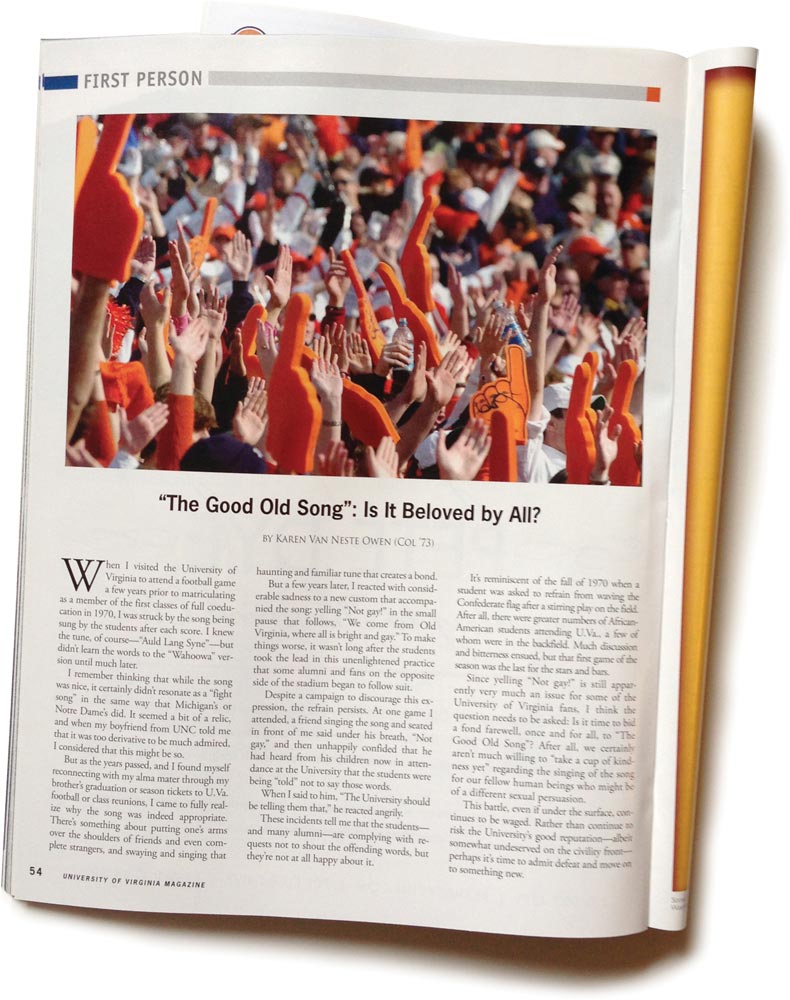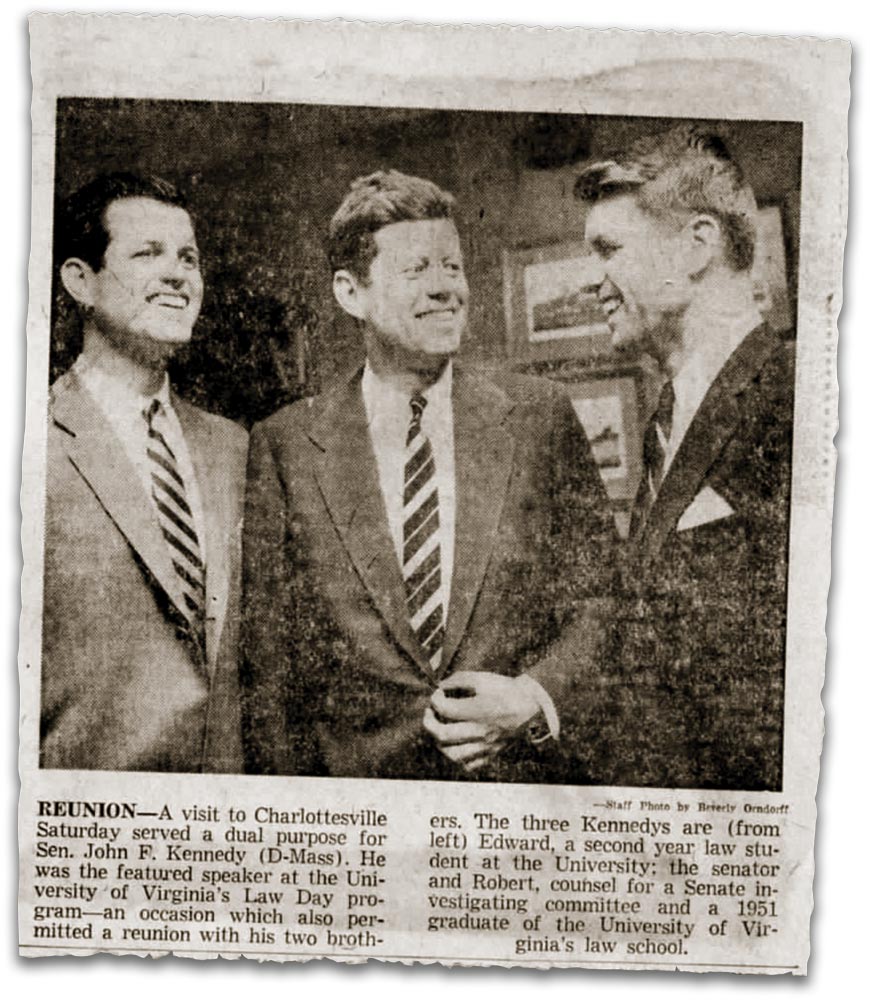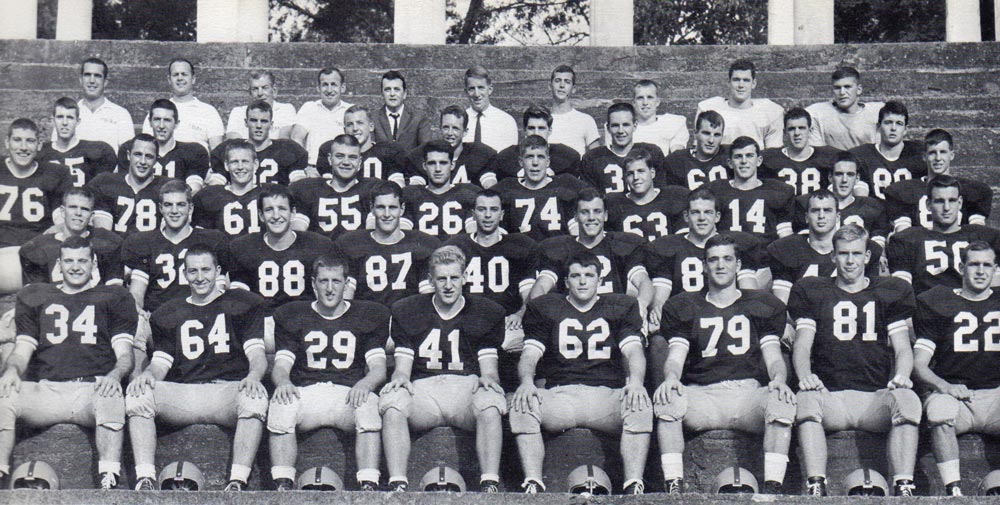Letters to the Editor
“The Good Old Song”
I would like to respectfully disagree with the article “‘The Good Old Song’: Is It Beloved by All?” As a recent graduate, I find that many of my best memories from UVA revolve around linking arms with my classmates (many of whom I met for the first time during the song) and belting out the words. It is a unifier and one of many traditions that students are proud of throughout their lifetimes as alumni. Without such traditions, UVA loses much of its individuality and charm.

We should never scrap “The Good Old Song.” No other tradition will unite students in quite the same way. We should; however, make more of a concerted effort to stamp out the practice of yelling “not gay” once and for all.
Kelsey Kerle-O’Brien (Col ’11)
Arlington, Va.
I hope I’m one of many who chime in, in agreement that singing out “not gay” is offensive and embarrassing. While I can’t wait to bring my husband and kids to a football game, I dread explaining “The Good Old Song” to them. Chanting something hateful shouldn’t be shrugged off as a silly tradition. It’s pretty simple. Keep the song. Let go of two words. The absence of “not gay” will speak volumes.
Thanks for addressing this in recent issues.
Karen Beardsley Rudolph (Col ’93, Educ ’96)
Alexandria, Va.
How shameful it is to learn of the anti-gay chant that now accompanies “The Good Old Song” at football games. Doubly so because it is these young people’s generation, and none of ours, that has performed the astonishing work of eroding the old stigmas that shaped so much of the gay experience in this country for too long. The University should not be in the business of “telling” these undergraduates what they can and cannot chant in the stadium. As ever, the cause of decency (so often, and so regrettably late in coming to our beloved alma mater) will have to be advanced by the students themselves, who will decide through their actions whether they attend a great or a third-rate institution.
Caitlin Flanagan (Col ’83, Grad ’91)
Los Angeles, Calif.
I was a player on the UVA football squad from 1974-78. As a player, I detested the “The Good Old Song” for a number of reasons, not the least of which was that our team so rarely provided opportunities to sing the song that it was third year before a student could learn the words. Moreover, the song was slow, noncelebratory and generally “blah.” As an alumnus and the father of a more recent one, I have changed my tune—pun intended.
The new, accelerated version of the song conjures memories, pride and a deep sense of gratitude for having been fortunate enough to attend the finest public university in our country. I say keep “The Good Old Song,” sing it even more frequently (with success in competition) and continue to educate our fans on insensitive violations of the original words to the song.
Ken Fulp (Com ’78)
High Point, N.C.
With all respect to “tradition,” is it not true that the image invoked in the mind of the nation by “The Good Old Song” is not the Lawn or the Rotunda, but Guy Lombardo and His Royal Canadians, or perhaps a gaggle of drunks wearing pointy party hats? Could we not find a tune composed in 1819 that was maybe less familiar but equally singable?
Justin E. Kidd (Grad ’65, ’73)
Las Vegas, Nev.
Throwing out “The Good Old Song” because of the continued misbehavior of a few students is throwing out the proverbial baby with the bathwater. The song dates to the earliest days of UVA football, with its authorship by Glee Club member Edward A. Craighill commemorating a returning football team in 1893. The camaraderie among UVA students and alums alike is unique among football songs. It would be a mighty shame to lose it.
Tim Jarrett (Col ’94)
Arlington, Mass.
Book Questioned
The Fall 2013 University of Virginia Magazine contains a brief review of a novel titled Christian Nation, by alumnus Frederic C. Rich. My first impression is that you are celebrating a work of religious bigotry. Perhaps you could correct any misperceptions among your readers that might have reactions similar to mine.
Dr. James R. Niederlehner (Med ’75)
Roanoke, Va.
Books by alumni and faculty are regularly featured in the magazine. There is no implied endorsement of these books. We leave that up to the readers. —Ed.
Nursing History
Thank you for the wonderful article on the study of nursing history. I graduated from the master’s program in nursing in 1983, directed by Barbara Brodie. She was instrumental in directing my career for the last several decades. It was great to see her profiled in this article, because she influenced hundreds of nurses who are making history now and in the future. She made you feel proud to be in the nursing profession.
Lisa Ashley (Nurs ’83)
Sacramento, Calif.
Capturing the Kennedys
I enjoyed the article, “The Kennedy Effect,” in the fall issue of the University of Virginia Magazine. I would like to point out that the photograph of the three Kennedy brothers was made by me on March 8, 1958, a Saturday afternoon, at the house Edward Kennedy was renting just outside of Charlottesville when he was a second-year law student. I was working in the Charlottesville bureau of the Richmond Times-Dispatch at the time, and then-Sen. John F. Kennedy was to address the Law School’s first annual Law Day function that night. Because Sen. Kennedy’s nighttime address would go past the deadline for the Charlottesville editions of the newspaper, I arranged through Bill Wranek, the director of University Relations, to go to Edward’s house during the afternoon to meet Sen. Kennedy and take notes from his prepared speech so I could write an early story for the Times-Dispatch.

Beverly Orndorff (Col ’57)
Richmond, Va.
Elzinga Shoutout
Thanks for what my students call a “shoutout” from Eric Prum (this was a new term for me until last year) [in the article about Prum (Col ’08) and Josh Williams (Col ’08), who introduced Mason jar cocktail shakers through their company, W&P Design]. And congratulations on doing what is very difficult: starting a new company. Doing what you have done requires creativity and tenacity. Very few people understand the personal sacrifice involved in a startup company; I do, having witnessed it first-hand with former students. I recently cranked up Econ 201 for another semester—and am watching my 1,050 students to see if there are any other “W&P Design” types in the Chem auditorium this fall. I shall do what I can to make the “dismal science” less dismal.
Ken Elzinga
Economics Professor, University of Virginia
UVA Football’s 21 Jewels

As milestone events at UVA are recounted by Virginia Magazine, it should be noted this is the 50th anniversary of the 21 Jewels, the name that the coaching staff, the press and the fans pinned on UVA’s first-year football team. That team included one of the biggest linemen in America, John Naponick (6 feet 10 inches and 325 lbs.); and quarterback, Bob Davis, who became the first person from
UVA to earn the ACC Player of the Year Award for football. Both played varsity basketball their second year, and Bob scored the final point in a win in the last varsity basketball game held in Mem Gym. Several team members played professional football, including the late Ed Carrington, a Seven Society member; and the late Jim Copeland, who became athletic director at UVA. Although precious gems tend to tarnish with age, may the memory of UVA’s 21 Jewels never fade.
Laurie Croft (Col ’67)
Richmond, Va.
Dog Days
Loved Sandy Gilliam’s retrospection on UVA’s legendary canines Beta and Seal. Only wish I could have known these University icons. I had always heard that Seal was named for the Great Seal of Virginia, which would seem appropriate. Perhaps it was just an old wives’ tale.Both canines were obviously very smart, in that they never wanted to graduate.
Brawner “B.” Cates (Col ’67)
Siesta Key, Fla.
According to the UVA Athletics website, “His sleek coat of fur earned him the name Seal, and he later became known as the ‘Great Seal of Virginia.’” —Ed.
More on Race Relations
I am an African-American female and now 75 years old young. I [along with my late husband of 51 years] completed my undergraduate work at all-black Virginia State College [now University] in May 1960. I am now retired after having taught in Roanoke, Va., public schools, as well as eventually becoming an associate professor in biology and the teaching of science. I taught for a number of years at several colleges and universities, including Virginia State, Norfolk State, Florida A&M, and finally St. Augustine’s College [now University].
As I flipped through the pages of the Virginia Magazine, I spotted “Race Relations” in the Letters section. The letter writer, an alumnus from the Class of 1991, seems to think that, by 1991, our nation, and Charlottesville, had arrived in a post-racial era. Perhaps he, like Justice Clarence Thomas, had great memories of growing up in the South. Being from an older generation, I don’t remember all the socially “good times.”My husband and I were both graduate students at UVA during the 1960s when the social do’s and don’ts were truly unbelievable—when we were two of perhaps five blacks at UVA and lived in a “socially acceptable” basement apartment in a nearby unfriendly community. Mr. Weiss may not have been taught by anyone who overtly discriminated, but we were. You must be reminded that students of the ’90s and even now, walked and are walking on the shoulders of many who suffered greatly. To repeat, we do not yet live in a post-racial world. It seems gullible to believe that even subtle racism is no longer or has not been a problem in recent years.
Irene R. Clark (Educ ’64)
Raleigh, N.C.
Much like Mr. Weiss, it is with curiosity and dismay that I read his letter to the editor, one penned in reference to a response to the “Unearthing Slavery at the University of Virginia” article in the Summer 2013 issue.
Mr. Weiss claims “[O]ne’s perceptions may be unduly influenced by the lens with which they gaze upon the world, seeing and hearing what they have been conditioned to expect and not what is actually there.” The dismissal of an individual’s unique and personal experiences as imaginary not only trivializes very real issues but contributes to the marginalization of students, faculty, staff and community members whose lives are directly impacted by instances of discrimination. At the very least, these sentiments contribute to a troubling sense of complacency; at worst, they aid in the perpetuation of a vicious cycle of inequity.
Erin Garratt (Col ’11)
Washington, D.C.
Telegram Revisited
I read with interest the letter about the telegram sent out by the UVA. Alumni Association to the parents of students in May 1970.
I was a student at the Virginia Military Institute during that period—and the experience there was a bit different from what Steve described at UVA. The VMI Corps of Cadets is part of the Virginia Militia, and subject to being called to duty by the governor. In the wake of the disturbances on campuses across the country in 1970, some in Richmond apparently were giving thought to calling the Corps into service to perform “riot control” operations on college campuses across the state, should the local police forces be overwhelmed. Someone realized that having cadets with rifles and bayonets confronting college students might have some unintended consequences, and the Corps was never called up.
I also recall coming to UVA with the VMI Glee Club in 1971, and being shocked at the reception that we received—with a handful of UVA students jeering at us as “baby killers” and “war mongers” (as if we, as undergraduate students at VMI, had any more input than UVA undergraduates when it came to national security decisions that had been made by a long series of presidents and defense secretaries).
All that had changed dramatically by the time I attended UVA to earn a master’s degree in the Corcoran Department of History in 1977. By that time, I was a captain in the Army, and I wore my uniform to the first class of every course throughout my time at UVA. I had nothing but the most positive reaction from other graduate students, many of whom were veterans using the GI Bill to go back to school.
Eric Hammersen (Grad ’78)
Annandale, Va.

Since you could not locate a copy of the telegram, I thought that you would like to have one for your archives (see below). I guess since it was an extraordinary time, my parents kept the telegram and it has spent the last 40 years in my Corks & Curls. May 1970 was a truly unique and unprecedented time in our University’s history—no need to apologize for the Alumni Association’s telegram and effort to calm the situation. Overall, I think we did act responsibly in spite of the Mayflower van, occupying Maury Hall, the rallies on the Lawn and Jerry Rubin encouraging us to burn down the University, which was met with a resounding chorus of “boos” in U-Hall. It was quite a month, and for many of us, quite a party.
Richard C. Marshall III (Col ’73)
Hagerstown, Md.